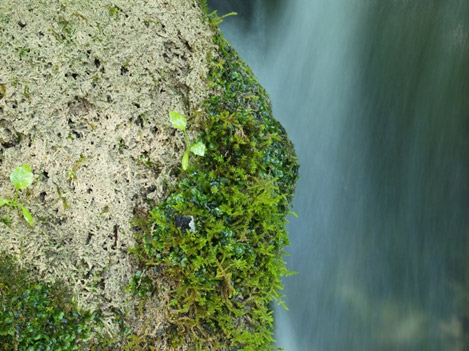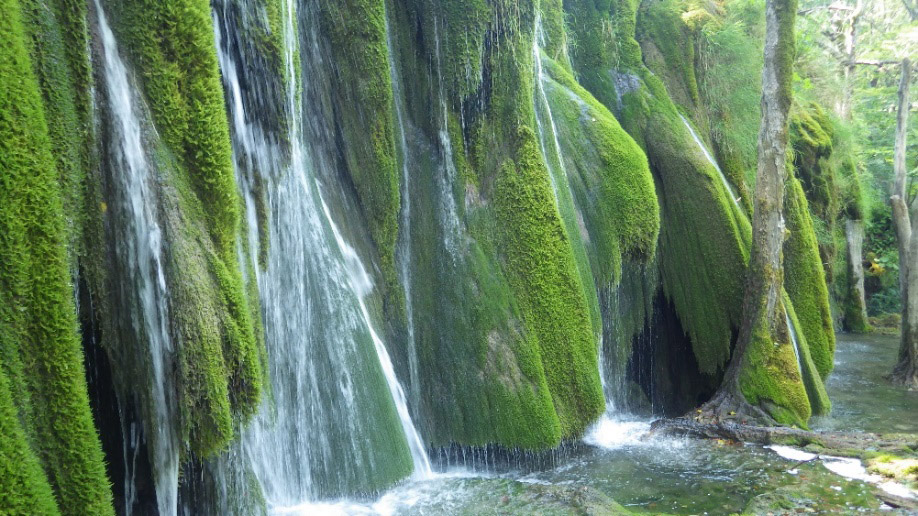How tufa is formed
There are numerous definitions for tufa, and one of the general ones that is commonly used to describe the tufa at Plitvice Lakes is: Tufa is a hollow, porous rock created from the deposition of dissolved calcium carbonate in the water by plants, algae and mosses. The second, which provides a more precise definition of the conditions of tufa formation is: Tufa is a product of calcium carbonate deposited at temperature conditions near to the ambient temperature, and often contains the remnants of microphytes and macrophytes, invertebrates and bacteria.
The water of the Plitvice Lakes is oversaturated with dissolved calcium carbonate in the form of calcium bicarbonate. At the riffles and particularly at the tufa barriers, calcium carbonate (calcite) is extracted from this mineralised water in the form of tiny crystals that are then deposited. The basic chemical formula for the deposition of tufa is:
![]()
The three main chemical requirements that must be met are:
- Oversaturation of water with calcium carbonate, i.e. a saturation index of Izas> 3
- pH value of the water greater than 8.0
- concentration of dissolved organic matter in the water lower than 10 mg L-1 carbon
What is not visible, and is very important to this specific and complex process of forming tufa are the blue-green algae (Cyanobacteria), the diatomaceous algae (Diatomeae), various bacteria, protozoans (single cell organisms) and multicellular microscopic organisms. These organisms are the living community that has formed on the rock, the plants (mosses) and objected submerged in the water.

Detail of a tufa barrier (photo: PLNP archive).
The calcite microcrystals adhere to the matter secreted by the algae and bacteria. These attached crystals become the site of crystallisation, where calcium carbonate from the water will continue to be deposited, forming the famous tufa barriers.
Tufa form is primarily given by the aquatic mosses and other microphytes and macrophytes, insect larvae and other invertebrates on the barriers. However, moss is most common, covering the steep and sometimes vertical tufa barriers, and the species that most often participates in building tufa is Palustriella commutata. This species is quickly “petrified”, and the appearance of the moss remains intact in the tufa. In calmer areas, the moss species Ptychostomum pseudotriquetrum builds tufa of the “Brijum” type. This results in the formation of tufa on the lower sections of the moss, while it continues to grow, enabling a continuous process of tufa building and barrier growth.

Travertine barriers of the Upper lakes overgrown with the moss species Palustriella commutata (photo: Antun Alegro).

